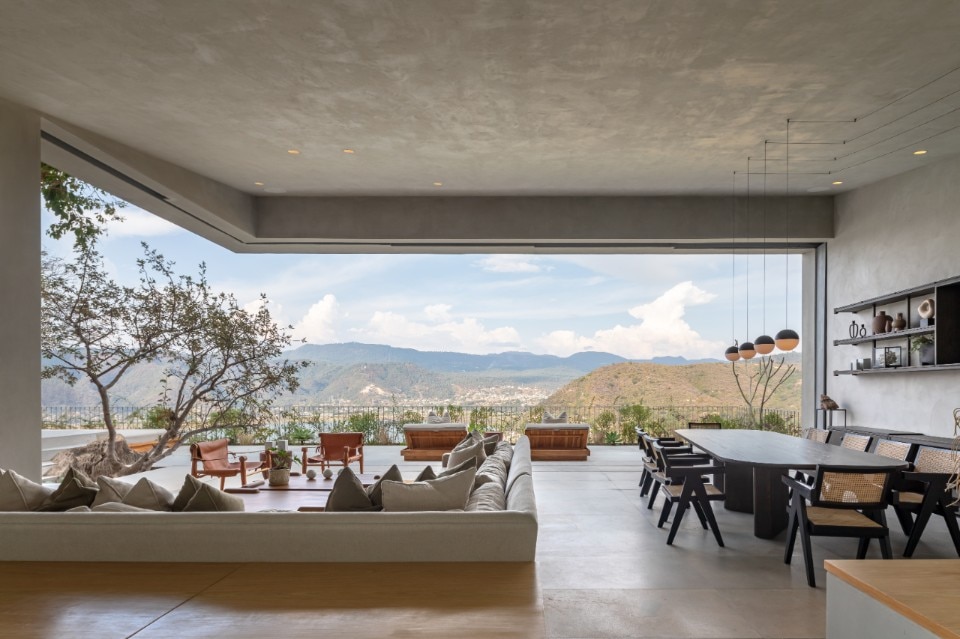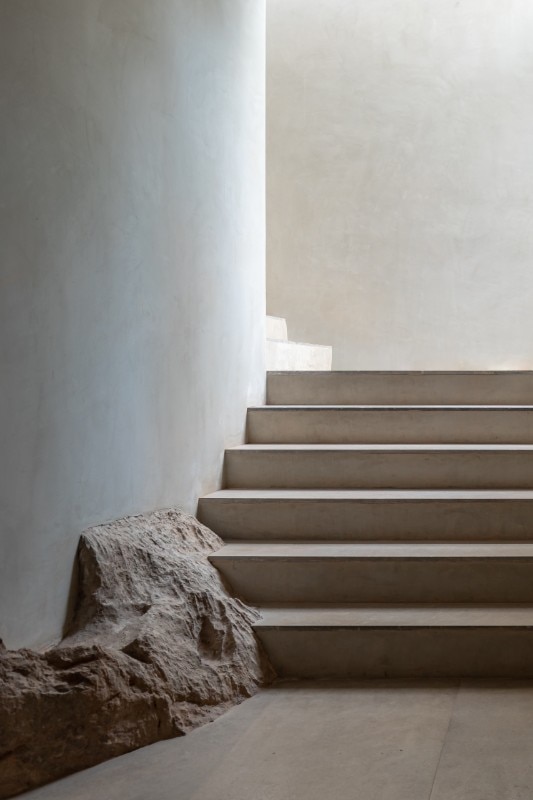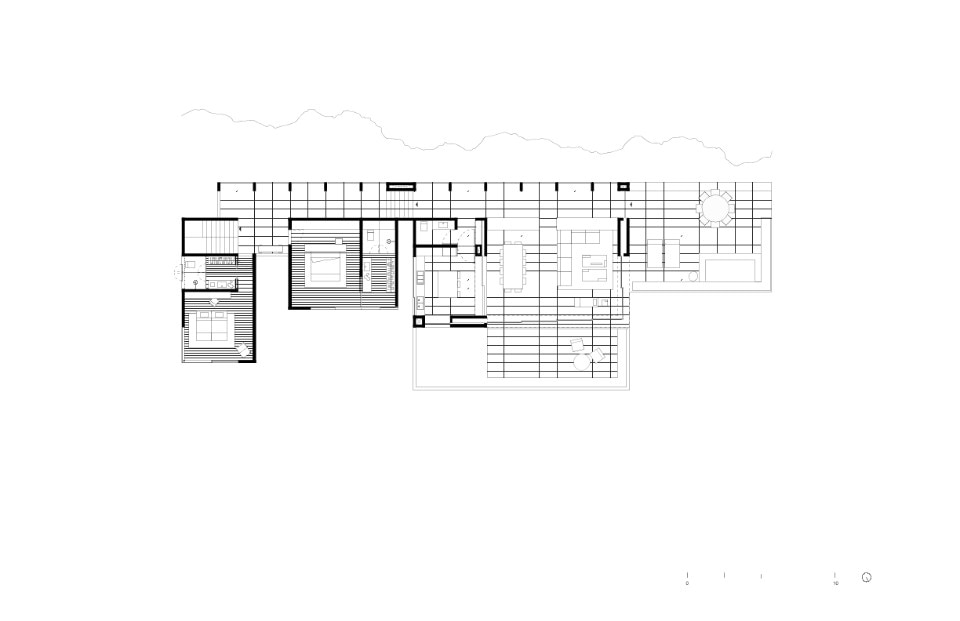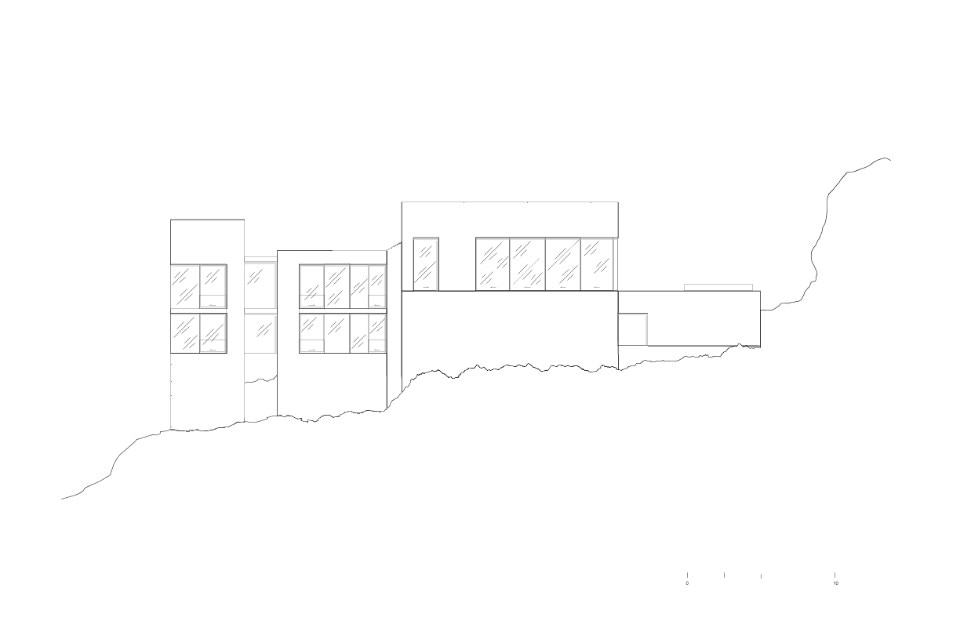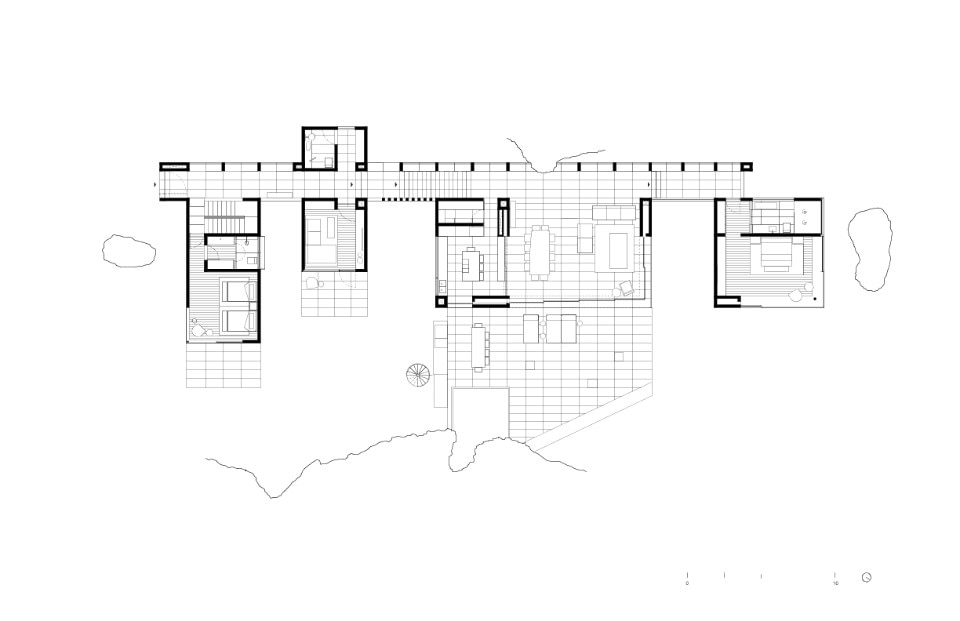Las Rocas is a residential complex of four villas perched on Mirador La Peña, a promontory that stretches from the Mexican city of Valle de Bravo in the middel of a lake, towards an imposing artificial dam.
In order to place each of the four houses on the steep slopes of the cape, the designers conducted a detailed and careful analysis of the site, minimising the impact of the constructions on streams, rocks and vegetation. A narrow cobbled road climbs between the rocks, leading to the central service area of the complex, housing a car park and some technical rooms. Residents leave their vehicles here and walk to the dwellings via paths and stairs that defy the altitude.
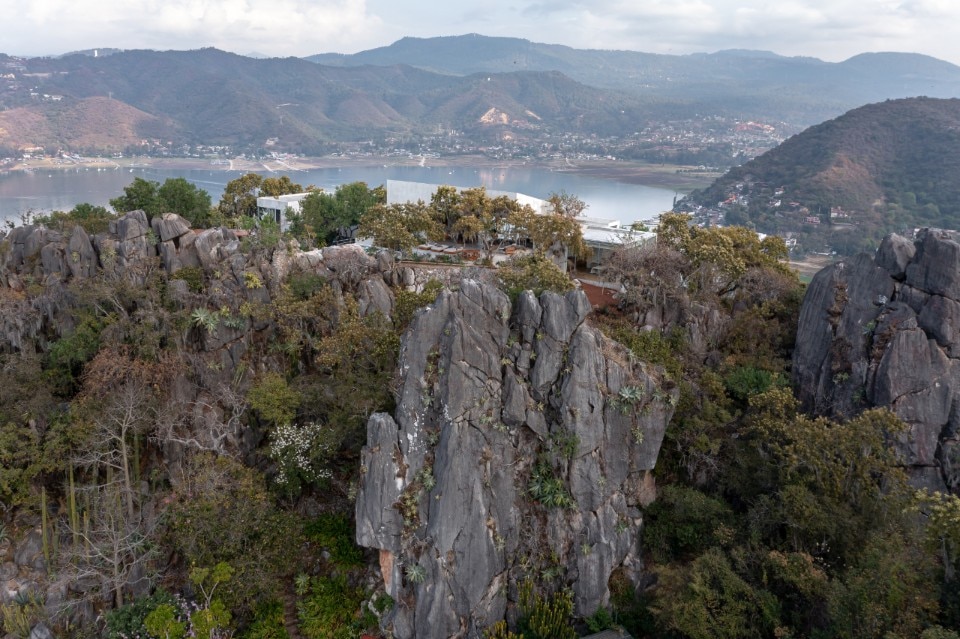
The four houses use similar modules but have different layouts depending on the orographic characteristics of the mountain. The volumes are freely arranged offering views in each of the six directions (front, back, top, bottom, left, right).
This simple and dynamic arrangement places the architecture in its natural context. The volumes do not touch each other: their separation allows natural light and ventilation to adequately filter into the interior spaces of the buildings through the voids.
The contrast between the masonry volumes and the glazed corridors is designed to stimulate different sensations: the closed enclosure of the sleeping area contrasts with the open circulation paths that instead relate directly to the landscape. The living room has an enormous 5 x 10 metre cantilevered corner window, connecting the interior with the exterior without any filter. In some of the configurations, the kitchen is separated from the living area by a sliding partition that can be opened if necessary.
The terraces represent "the last piece of the jigsaw puzzle": they have been drawn in situ to meticulously adapt them to the context and to allow the landscape to become part of the project, blurring the boundary between the built and the environment, where rocks and vegetation make their way into the domestic environment.

The light grey plaster of Las Rocas allows the buildings to blend harmoniously with the surrounding rocks, while the flush exterior windows amplify the effect of pure volumes that, while distinguished by their rigorous geometry, reflect the natural environment and visually integrate into the landscape.
This colour palette creates a discrete and sober architecture, in which the composition of the solid volumes suggests lightness and allows the surrounding nature to take centre stage.





